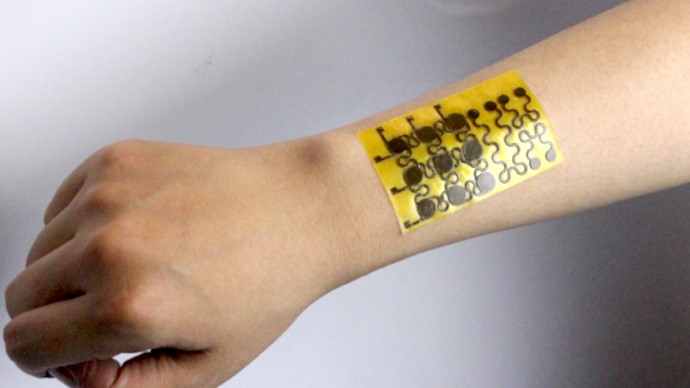
By Heather Hamilton, contributing writer
It’s been a busy few months in the world of skin-meets-technology, and early February is shaping up to be no different. In a Feb. 9 issue of Science Advances, researchers from the University of Colorado Boulder described a new kind of electronic skin that is also recyclable and self-healing.
Of course, it isn’t actual skin — instead, it is a skin-like film with sensors built in to monitor things like pressure, temperature, airflow, and humidity. Made from three compounds that are easily available commercially mixed together with silver nanoparticles, the skin recreates chemical bonds when sliced through, leaving an e-skin that is completely unharmed.
In an interview with Newsweek, lead researcher Jianliang Xia, a mechanical engineer at Boulder, said, “This has quite broad applications, in a sense, to enable sensation of otherwise passive systems.” In an earlier statement, he said, “What is unique here is that the chemical bonding of polyimine we use allows the e-skin to be both self-healing and fully recyclable at room temperature.”
Should the product be damaged in such a way that it cannot heal, the report says that it can be soaked to liquify the material so that it can be reused to make new e-skin. Recycling the skin takes approximately 30 minutes at 140°F and 10 hours at room temperature. If the skin membrane is torn or cut in half, the laceration can heal or reassemble by applying more of the chemical compound. Re-establishing the chemical bonds takes only 30 minutes at room temperature and only a few minutes at 140°F. The Verge reports that it can likely be used in prosthetics, robots, and other varieties of smart textiles.
Because it can sense pressure, it is especially exciting for the future of prosthetics because it could allow the person wearing the prosthetic to better monitor how they’re using it, applying only as much force as necessary when lifting breakable items. Wei Zhang, a co-author, explained to Newsweek that real skin allows individuals to avoid things like getting burned. “E-skin can basically mimic those [preventative] functions. At least that’s one big part of the electronic skin.”
E-skin is a hot commodity right now, though this appears to be the first that is easily recyclable, which makes the business of getting rid of the chemicals and electronics involved much simpler, which is surprising being that it has been around since 2011. And, while it seems like a miracle product, there are a few limitations — namely, it lacks the stretch of human skin. Xiao says that the team is working toward making the product more scalable and, therefore, easier to manufacture.
Sources: Science Advances, Newsweek, The Verge, Edgy Labs
Image Source: Science Advances via Creative Commons Attribution
Advertisement
Learn more about Electronic Products Magazine





